I have a dataset from an aircraft flight and I am trying to plot the position of the plane (longitude x latitude) then color that line by the altitude of the plan at those coordinates. My code looks like this:
lat_data = np.array( [ 39.916294, 39.87139 , 39.8005 , 39.70801 , 39.64645 , 39.58172 ,
39.537853, 39.55141 , 39.6787 , 39.796528, 39.91702 , 40.008347,
40.09513 , 40.144157, 40.090584, 39.96447 , 39.838924, 39.712112,
39.597103, 39.488377, 39.499096, 39.99354 , 40.112175, 39.77281 ,
39.641186, 39.51512 , 39.538853, 39.882736, 39.90413 , 39.811333,
39.73279 , 39.65676 , 39.584026, 39.5484 , 39.54484 , 39.629486,
39.96 , 40.07143 , 40.187405, 40.304718, 40.423153, 40.549305,
40.673313, 40.794548, 40.74402 , 40.755558, 40.770306, 40.73574 ,
40.795086, 40.774628] )
long_data = np.array( [ -105.13034 , -105.144104, -105.01132 , -104.92708 , -104.78505 ,
-104.6449 , -104.49255 , -104.36578 , -104.32623 , -104.31285 ,
-104.32199 , -104.41774 , -104.527435, -104.673935, -104.81152 ,
-104.82184 , -104.81882 , -104.81314 , -104.74657 , -104.78108 ,
-104.93442 , -104.98039 , -105.0168 , -105.04967 , -105.056564,
-105.03639 , -105.13429 , -105.05214 , -105.17435 , -105.070526,
-104.93587 , -104.80029 , -104.65973 , -104.50339 , -104.33972 ,
-104.21634 , -103.96216 , -103.84808 , -103.72534 , -103.60455 ,
-103.48926 , -103.376495, -103.25937 , -103.10858 , -103.08469 ,
-103.24878 , -103.4169 , -103.53073 , -103.23694 , -103.41254 ] )
altitude_data = np.array( [1.6957603e+00, 1.9788861e+00, 1.8547169e+00, 1.8768315e+00,
1.9633590e+00, 2.0504241e+00, 2.1115899e+00, 2.1085002e+00,
1.8621666e+00, 1.8893014e+00, 1.8268168e+00, 1.7574688e+00,
1.7666028e+00, 1.7682364e+00, 1.8120643e+00, 1.7637002e+00,
1.8054264e+00, 1.9149075e+00, 2.0173934e+00, 2.0875392e+00,
2.1486480e+00, 1.8622510e+00, 1.7937366e+00, 1.8748144e+00,
1.9063262e+00, 1.9397615e+00, 2.1261981e+00, 2.0180094e+00,
1.9827688e+00, -9.9999990e+06, 1.8933343e+00, 1.9615903e+00,
2.1000245e+00, 2.1989927e+00, 2.3200927e+00, -9.9999990e+06,
4.0542388e+00, 4.0591464e+00, 4.0597038e+00, 4.3395977e+00,
4.6702847e+00, 5.0433373e+00, 5.2824092e+00, 5.2813010e+00,
5.2735353e+00, 5.2784677e+00, 5.2784038e+00, 5.2795196e+00,
4.9482727e+00, 4.2531524e+00] )
import matplotlib as plt
fig, ax1 = plt.subplots( figsize = ( 10, 10 ) )
ax1.plot( long_data, lat_data, alpha = .4)
ax1.scatter( long_data, lat_data, c = altitude_data )
plt.show()
Is there a way to consolidate the data into one line that plots the location of the aircraft and adjusts the color for the elevation?
While plotting a line and a scatter together works, it does not look very good when I put in all the data (n = 2400 ). Thanks!







